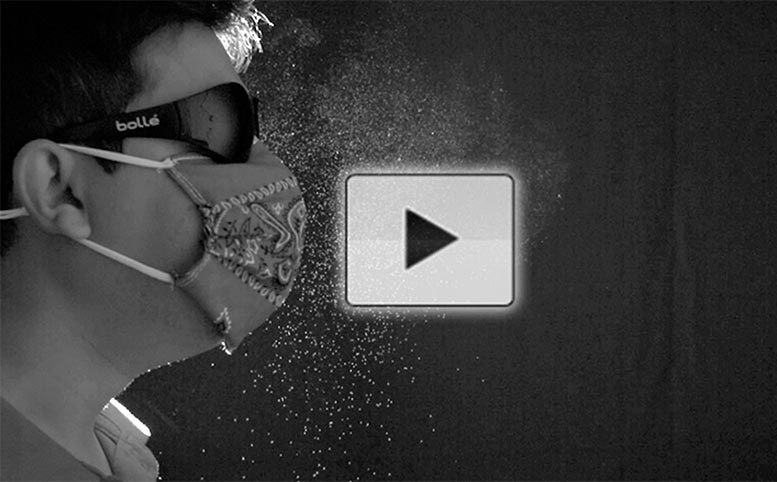Sneeze Cam Reveals Best Fabric Combos for Cloth Masks
0 View
Share this Video
- Publish Date:
- 2 July, 2021
- Category:
- Covid
- Video License
- Standard License
- Imported From:
- Youtube
Tags

High-speed videos of a person sneezing reveal the best fabric combinations for fabric masks. Credit: American Chemical Society
During the COVID-19 pandemic, cloth face masks became a way to protect yourself and others from the virus. And for some people, they became a fashion statement, with many fabric choices available. But how effective are they, especially at curbing a sneeze? Now, researchers reporting in ACS Biomaterials Science & Engineering used high-speed videos of a person sneezing to identify the optimal design of a cloth mask. Watch a video of the sneeze camera here:
Early in the pandemic, global shortages of surgical masks and N95 respirators led many people to make or buy cloth face masks. With safe and effective COVID-19 vaccines now available, mask restrictions are easing in many states. However, face masks will likely be needed in certain environments for a while yet, especially with the emergence of potentially vaccine-resistant variants. They may also be helpful in future pandemics. Face masks help reduce the spread of disease by blocking small, virus-laden droplets that are expelled through the nose and mouth when a person speaks, coughs or sneezes.
A few studies have examined the effectiveness of various machine-made droplet and aerosol blockers, but none have been conducted under the explosive conditions of a real human sneeze so far. Shovon Bhattacharjee, Raina MacIntyre and colleagues at the University of New South Wales wanted to see how well masks made of different fabrics and layers blocked respiratory droplets from a healthy adult’s sneeze.
The researchers made simple face masks using 17 commonly available fabrics. Each mask had one, two or three layers of the same or different fabrics. A healthy 30-year-old volunteer put on each mask, tickled the inside of his nose with tissue paper on a cotton swab, and then readjusted the mask just before the onset of a sneeze. The researchers made high-speed videos of the sneeze and calculated the intensity of the drops in the images in an area 2 cm from his mouth.
With each layer of dust, the drip-blocking ability improved by more than 20-fold. Interestingly, all the three-layer fabric combinations the researchers tested were more effective than a three-layer surgical mask.
The best drop-blocking masks contain a hydrophilic inner layer of cotton or linen, an absorbent middle layer of a blend of cotton and polyester, and a hydrophobic outer layer of polyester or nylon. Machine washing the masks did not diminish their performance; in fact, masks with cotton or polyester worked slightly better after washing because of the shrinkage of the pores.
Future studies are planned with more people and different age groups, the researchers say.
Reference: “Experimental Evidence for the Optimal Design of a High Performance Cloth Mask” by Shovon Bhattacharjee, Prateek Bahl, Charitha de Silva, Con Doolan, Abrar Ahmad Chughtai, David Heslop and Chandini Raina MacIntyre, May 21, 2021, ACS Biomaterials Science & Engineering.
DOI: 10.1021/acsbiomaterials.1c00368
The authors acknowledge funding from the Australian Government’s National Health and Medical Research Council and the University of New South Wales (UNSW) Scientia Ph.D. Scholarship.










